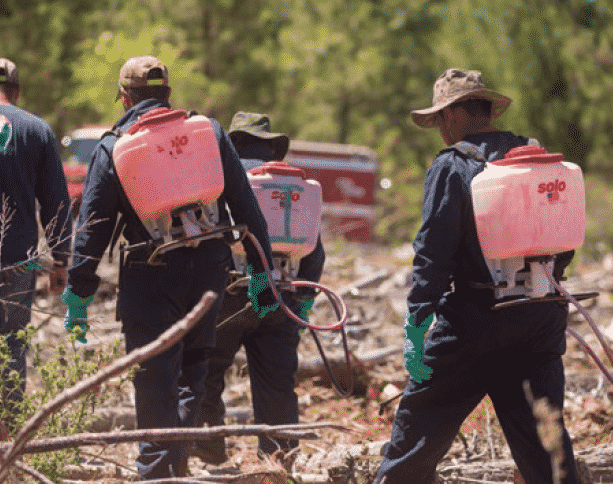When you receive the text alert to be evacuated due to a nearby wildfire, it is all hands on deck for you and your loved ones. You will have little to no time at all to start gathering all your essentials and prepare your house to have the best possible chance of surviving.
First things first, what you SHOULD NOT DO, is waste time on watering your front lawns, house, and grass. This is not how you protect your home. You will want to use your time wisely on gathering every essential you will need for up to a week of being evacuated.
1. Immediately notify your household members that you are evacuating and where to meet.
Always start the evacuation process and stay alert with the local fire department, police department, and officials. This can be your only source of information when network congestion hits. Download the FEMA app and receive real-time alerts.
Once that is established, gather your essentials and start heading out to the official evacuation zones. Stay familiar with your evacuation routes and follow the authority.
2. Shut off the gas supply to your home.
Shutting off the gas at the meter will prevent any further casualties to the property. Turn off the pilot lights, and close all appliance valves and gas valves inside the property. Identify any hazards such as propane tanks and relocate them away from the property.
3. Close off all entryways, doors, and windows.
Due to the amount of smoke and embers, you will want to close off all openings. Embers are the number one cause of houses burning inside out. There are many risks that can occur if embers fly into windows, doors, cracks, etc. Embers are actually able to fly for miles away from the wildfire and ignite spot fires. If you saw footage from the Laguna Niguel Coastal Fire, a lot of the houses were flaring up from the inside out due to the embers!
Closing off all openings to the home during an evacuation is critical in blocking any embers flying through openings, thus catching any small flammable materials on fire such as debris or dust.
4. Clear out the 0-5 feet zone of your property.
Make sure that nothing is flammable, including patio furniture, firewood, plastic, or decorative pieces within the 0-5 feet space of the property. Furthermore, you will want to have some clearance of vegetation in the 5-30 feet zone of your property. This should be done proactively and on a maintenance basis to best increase the chance of your property’s survival.

Additional Proactive Tip: Apply long-term fire retardant to your property.
Did you know you don’t need to be a celebrity to have a helicopter drop fire retardant at your property? Allied Disaster Defense is able to apply this fire retardant from the ground and spray the vegetation, wood fences, decks, and perimeter of your property as an additional layer of defense.
Have you seen the red fire retardant dropped from airplanes and onto the wildfires to create lines of firebreaks? That means the fire will burn up to the line, but not any further as it will instantly be put out by the retardant. This fire retardant can be ground applied to your property as well. The exact same fire retardant as the ones dropped from the airplanes can be applied to your property and onto the vegetation along the perimeter to further protect your home.
This fire retardant is environmentally friendly and safe for humans, pets, animals, and vegetation. It is technically a fertilizer and you can technically ingest it, we just don’t recommend doing that. This highly effective fire retardant can be applied to your property throughout the fire season to proactively be ahead of the wildfires to come.
What can you do today to protect your property?
Now that you know the best tips, what you can do today is call Allied Disaster Defense and schedule a Wildfire Risk Assessment.
1) We can perform a wildfire risk assessment: a comprehensive report done by a retired fire marshal. This will recommend any risk at the property regarding home hardening, defensible space, vegetation management, and application of long-term fire retardant.
2) With the risk assessment, you can choose to perform any work recommended by us. Some recommendations you may find helpful:
– Home hardening with ember-resistant vents. These vents will prevent the embers from blowing into the property as you saw in laguna, burning the houses from inside out.
– Vegetation management – removal or relocation of vegetation away from the property to remove any combustible vegetation away from the property, creating more defensible space for the property.
– Application of long-term fire retardant – Same fire retardant dropped from the planes but without the red dye to be ground applied to the vegetation and perimeter of the property. This is done on a maintenance basis before wildfire season and after the rain season.
Our team is led by Retired Captain Rich Snyder, a fire marshal that will be performing the fire risk assessment. He works with Sierra Madre Fire Department and holds state certifications including Fire Investigator, Fire Protection Specialist, Fire Prevention Officer, and Wildfire Engine Boss among others.
Rich was the first to successfully develop a unique ground application of PHOS-CHEK fire retardant, a program he’s utilized to protect the perimeter of the city of Pasadena’s iconic Rose Bowl and other wildfire-risk areas in the San Gabriel Valley, annually for the past 30 years
You can learn more about Rich with these few short videos:
Rose Bowl: https://youtu.be/ZuSNbn_Ji_w
Holistic Approach: https://www.youtube.com/watch?v=cN-ZVTtZR3U
If you have any questions, please let me know. To schedule the fire risk assessment at your property by calling us or leave your information here.




